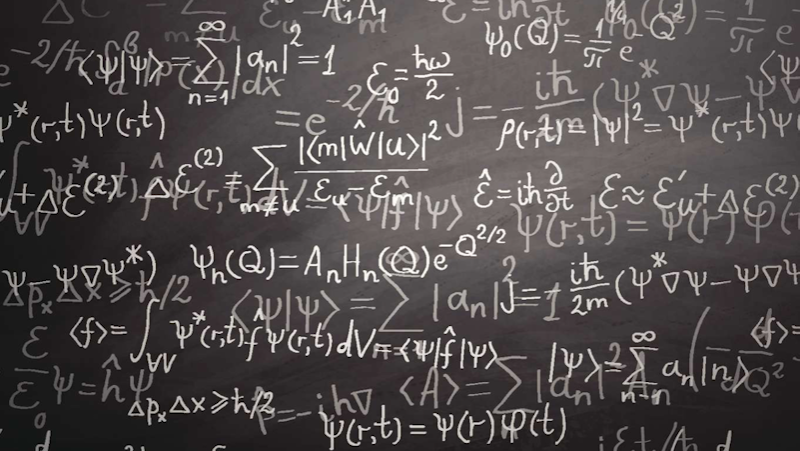A recent piece debunking the multiverse, by Crispin Sartwell, left me dissatisfied, even though I was substantially in agreement with it. What he was focused on, without using the term, was the many-worlds interpretation of quantum mechanics, which I also find hard to believe. That’s just one category of multiverse, though, distinct from the cosmological type where there are multiple big bangs, leading to multiple space-time continua, but not necessarily ones in which there are other versions of ourselves making other choices on what to eat for breakfast.
Sometimes, in fact, “the multiverse” is defined as the cosmological type, excluding the many-worlds interpretation. On the other hand, I recall once copyediting a near-incomprehensible article that claimed the two types were the same thing. Some of Sartwell’s piece was about semantics; he doesn’t like “multiverse” since “universe” is by definition everything there is. More to the point, he thinks physicists who argue for the multiverse (meaning here the many-worlds interpretation) have made a wild leap; and should’ve made sure “other explanations of double slits or cats in boxes were fully explored before we just went for full-bore irrationalism.”
I think that’s basically correct. The current evidence doesn’t compel a belief that there are innumerable versions of reality branching off every moment. But it’s worth some thought as to why physicists would even entertain such a thought. Decades of experiments have shown phenomena along the following lines: Electrons are fired through two slits, with their impacts registered on a screen beyond. What shows up on the screen is a wave-like pattern, suggesting that the electrons are all over the place, not in specific locations. Fire just one electron through, and you still get such a pattern.
There’s always some “fuzziness” to the micro-world. Variables such as position and location can only be described in probabilities. By one analogy, the wave-like behavior of particles is like a crime wave; there’s a chance of getting mugged, but one can’t predict exactly where the muggings will occur. Einstein thought this meant quantum theory was incomplete, that there must be “hidden variables” that determine exactly what’s happening in the micro-world. But experiments have indicated that such variables, if they exist, must have some “non-local” quality where particles can influence each other across vast spaces.
Yet then there’s the question of why macroscopic objects don’t hover in an indefinite state. That was the point of Schrödinger’s cat, a thought-experiment in which a particle, with some probability, trips a Geiger counter that unleashes poison that kills a cat. Since the particle doesn’t have a definite state, neither should the cat. Much confusion has arisen over explanations that the cat becomes alive or dead once it’s “observed”; yet “observation” in quantum mechanics has generally not meant that someone’s looking, but rather that there’s been some kind of interaction between a quantum system and the outside world. A macroscopic object such as a cat, in this view, can’t exist in the same wave-like, in-between state that a particle can. The probability wave has taken on a definite value.
While there are various explanations for this “collapse of the wave function,” the many-worlds view holds that there’s been no collapse at all. Rather, the world has split into multiple worlds with multiple cats, some alive and some dead. One might complain, as Sartwell does, that all this is a massive violation of Ockham’s razor, the principle of finding the most parsimonious explanation. However, many-worlds proponents argue that they’re the ones who are upholding Ockham’s razor, by not positing some special reason why macroscopic objects are exempt from the quantum rules.
As a further wrinkle, not all many-worlds enthusiasts believe that these proliferating worlds are physical. Some do, but others treat them as mathematical constructs. Almost three decades ago, I went to a book-signing of Murray Gell-Mann’s The Quark and the Jaguar. The Nobel Prize-winner propounded what he called the “modern approach” to quantum mechanics, drawing upon the many-worlds interpretation but asserting that rather than “many worlds,” it made more sense to say, “many histories, all treated alike by the theory except for their different probabilities.” He argued that “it is not necessary to become queasy trying to conceive of many ‘parallel universes,’ all equally real.”
The last word on all this hasn’t been written. A recent piece in the online magazine Quanta recounted research suggesting that black holes may play a key role in collapsing quantum states, that they might serve in some sense as “observers” of the universe. That would be an interesting twist on the work of John Archibald Wheeler, whose long career in physics included both suggesting we live in a “participatory universe” and coining the term “black hole.”
Science writer John Horgan, whose Scientific American columns I copyedited for years, recently published an online book titled My Quantum Experiment, recounting his efforts to grapple with quantum mechanics by making a late-middle-age effort to study its technicalities. Horgan’s a skeptic of the many-world interpretation and other multiverse theories.
Astronomer Phil Plait, whose articles I’ve also copyedited, has a book about to come out titled Under Alien Skies: A Sightseer’s Guide to the Universe. Plait discusses what you’d see from various astronomical vantage points, such as near Saturn’s rings or on Pluto’s surface. He concludes with a chapter on “The Last Sky You’ll Ever See: Black Holes.” It’s an intriguing vignette of an encounter one wouldn’t survive.
—Kenneth Silber is author of In DeWitt’s Footsteps: Seeing History on the Erie Canal and posts at Post.News.

